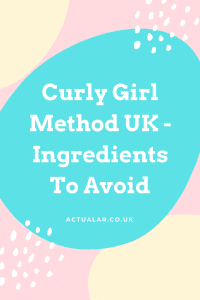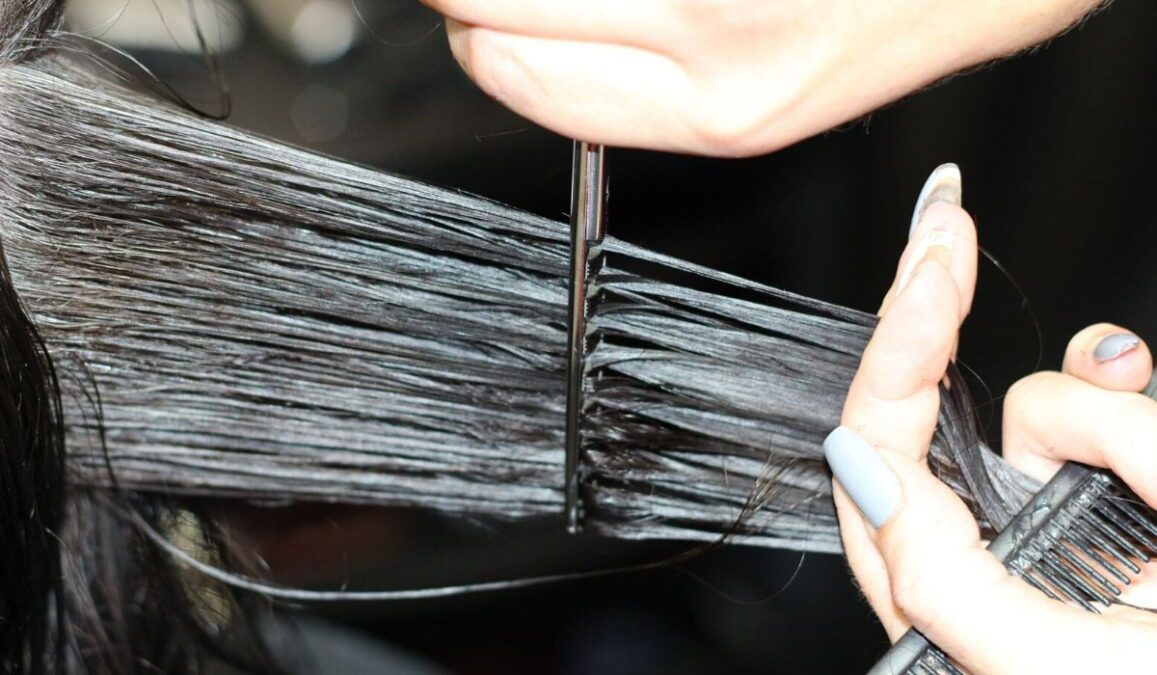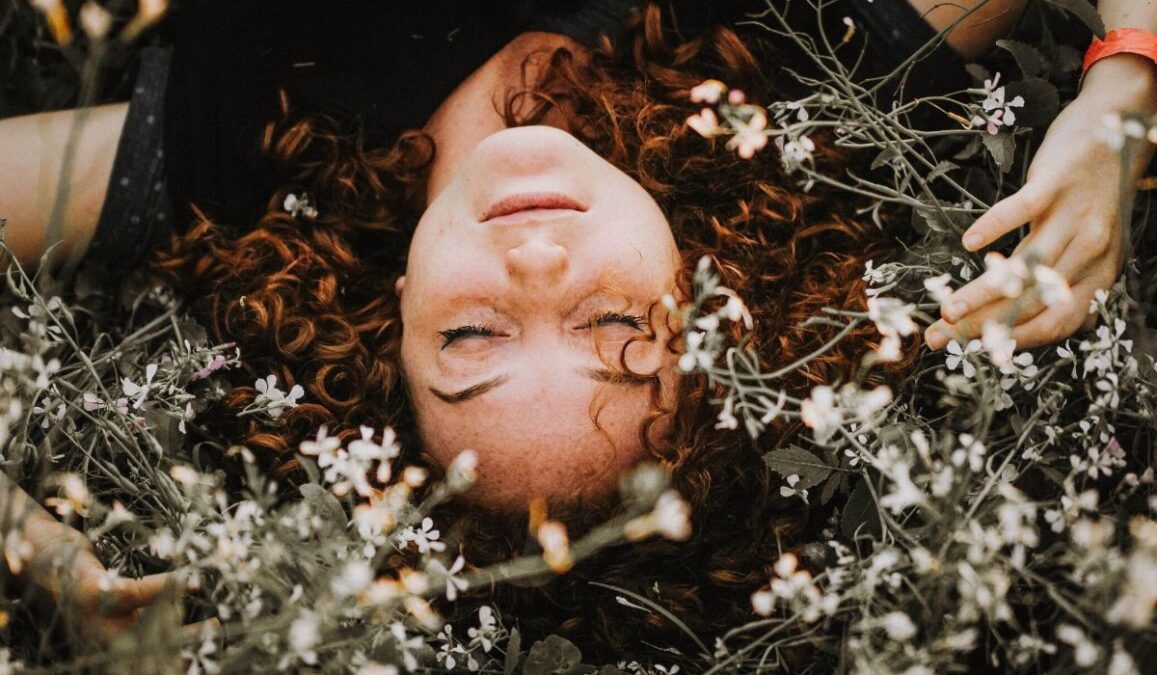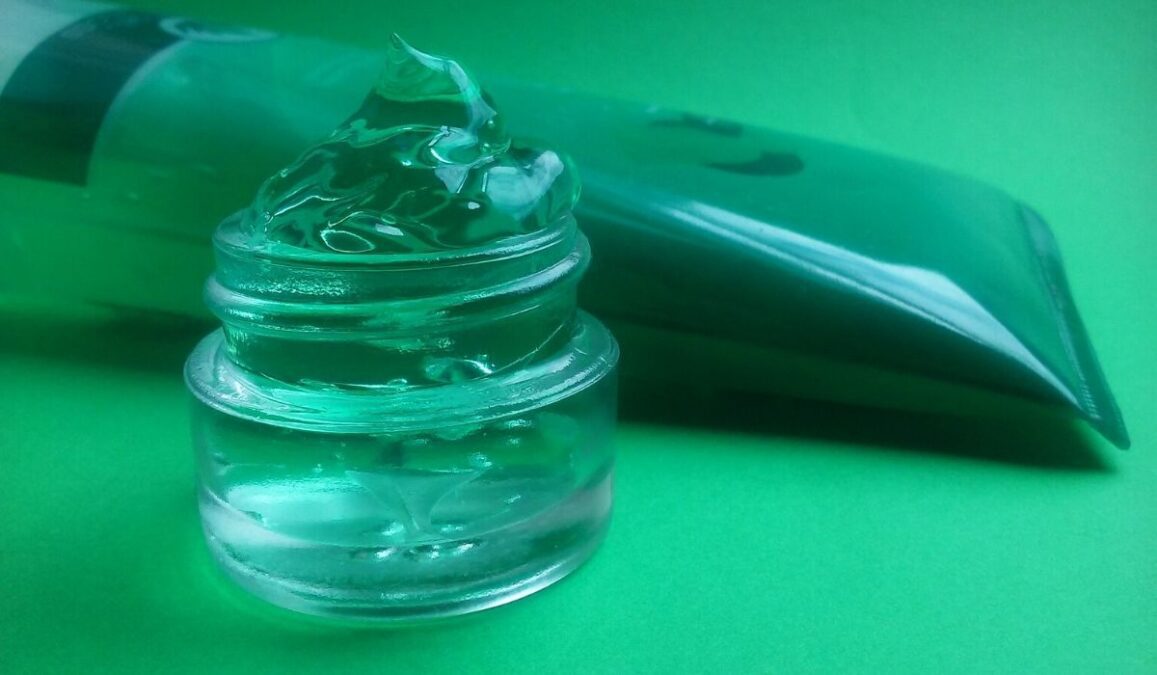So I know that I talk about the curly girl method a lot. But, for those of us following the curly girl method UK style, there’s not always as much information out there as you’d like. So today I’m looking a bit more deeply into the products used in this method. Well, more specifically, I’m looking at curly girl method ingredients to avoid in your products.
About the curly girl method
Before I start though, I wanted to clarify (pardon the pun) something about the curly girl method. The curly girl method is precisely that; a method. It’s not a strict regime that you have to follow to the letter.
One of the reasons that there’s a lack of definitive advice for UK curly girls is that there’s just no one-size-fits-all solution. Some aspects of the method will work for some, others won’t. That’s perfectly ok though!
I’ve known a lot of people who tried the curly girl method and gave up after a few weeks because they didn’t think they were getting results. Part of this, aside from the lack of beginner-friendly information, is that it’s easy to get hung up on the idea of ‘doing it right’.
I don’t think there’s a hard and fast set of rules at play with the curly girl method. Yes, there are the fundamental principles of using the right products and changing up the way you wash, dry and style. However, this method is all about finding what works for you and your hair. Ultimately, you know your hair better than anyone else, so don’t worry about going against the grain if you need to!
For example, I find it really tricky at times to sleep with my hair up in a pineapple, as I find it encourages headaches at night. That’s not to say I don’t normally do it for the sake of my curls, but I don’t give myself a hard time if I can’t be arsed either.
The curly girl method isn’t a cult. You can try different aspects of it and see what works for you. It’s really easy to get bogged down with all the ‘how-to guides’ and ‘beginner’s advice’ (the irony of me saying this as I write this post isn’t lost on me, don’t worry), but essentially, you should always just do what works for you.
Right, now I’ve said my bit on that, it’s time to jump into a bit of science-style crap to do with ingredients to avoid. Yay!
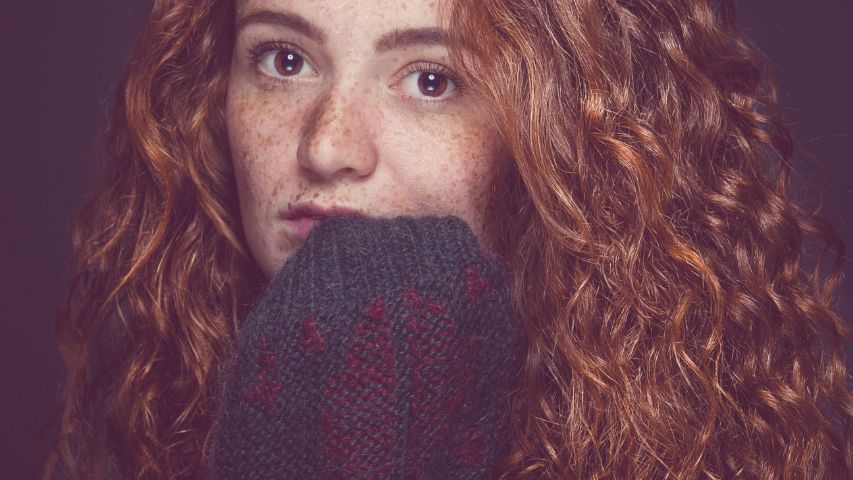
Curly girl method ingredients to avoid
I know this might seem a bit boring, but it does help to learn which ingredients are going to suck the life out of your curls and which won’t. Take it from someone who has done more than their fair share of trawling the supermarket, huffing exasperatedly onto the back of almost every shampoo bottle.
In one of my other posts, I talked about the two main ingredients that kill off your hair’s curls; silicones and sulphates. But how do you know what they look like in that massive list of chemicals on the back of the bottle?
Silicones to avoid in the curly girl method
Silicones are the main ingredient you’ll want to try and avoid if you do have curly hair. They need to be removed with a sulphate shampoo before you can start the curly girl method properly, so double-check any existing conditioners you might be using just to be sure. The key ingredients to look out for here are ones that contain the following words or suffixes:
- botanisil
- cone
- dimethcione
- dimethicon
- microsil
- silane
- silicon
- siloxane
- siloxysilicate
- silsesquioxane
- silylate
Are all silicones bad?
As with all things, there are exceptions to the ‘avoid silicones’ rule. Not all silicones are bad. Some water-soluble and plant-based ones are actually okay, but it can be a minefield finding transparency about which ones are safe to use.
Instead, here are some of the most common harmful silicones you can keep an eye out for on the back of your product bottles.
- Amodimethicone
- Aminopropyl Triethoxysilane
- Dimethicone
- Dimethiconol
- Cyclopentasiloxane
- Cyclomethicone
- Cetearyl Methicone
- Behenoxy Dimethicone
- Bis-aminopropyl dimethicone
- Cetyl Dimethicone
- Stearyl Dimethicone
- Phenyl Trimethicone
- Trimethylsilylamodimethicone
- Diphenyl Dimethicone
- Cetyl PEG/PPG-15/15 Butyl Ether Dimethicone
- Trimehtylsiloxysilicate
- Crosspolymer Cyclohexasiloxane
- PCA Dimethicone
- Hexamethyldisiloxane
- Bis-Hydroxy/Methodoxy Dimethicone
- Bis-Phenylpropyl Dimethicone
- Silicone Quaternium-18 and 22
- Cetyl Phosphate Silicone Quaternium-16
- Trisiloxane
- Dimethicone Copolymer
- Di-Isostearoyl Trimethylolpropane Siloxy Silicate
Sulphates to avoid in the curly girl method
Sulphates are the other primary ingredient you’ll need to try and avoid if you’re following the curly girl method. They’re most often used in shampoos to create the foaming effect that most people associate with cleansing. The thing is, they’re often unnecessary, and for curly girls, they can be particularly harmful to the hair.
Again, there are exceptions to this. While the blanket advice to anyone following the curly girl method is to avoid all sulphates, there are occasions where a low-sulphate shampoo (or low-poo) is useful. I wrote about this a little more in this post, if you’d like to find out why.
Here’s a list of the main sulphates to avoid when looking through the product ingredients list.
- alkyl benzene sulfonate
- alkylbenzene sulfonate
- ammonium cocoyl sulphate/sulfate
- ammonium laureth sulphate/sulfate
- ammonium lauryl sulphate/sulfate
- ammonium xylene-sulfonate
- ethyl peg-15 cocamine sulfate
- sodium alkyl sulphate/sulfate
- sodium c12-18 alkyl sulphate/sulfate
- sodium cetearyl sulphate/sulfate
- sodium coceth sulphate/sulfate
- sodium coco sulphate/sulfate
- Sodium Cocoyl Sarcosinate
- sodium laureth sulphate/sulfate
- sodium laureth-40 sulphate/sulfate
- sodium lauryl sulphate/sulfate
- sodium myreth sulphate/sulfate
- sodium polystyrene sulphate/sulfate
- sodium xylene-sulfonate
- sodium xylenesulfonate
- TEA dodecylbenzenesulfonate
- TEA lauryl sulphate/sulfate
- TEA-dodecylbenzenesulfonate
- triethanolamine lauryl sulfate
- triethanolamine lauryl sulphate
- Dioctyl Sodium Sulfosuccinate
Drying alcohols to avoid in the curly girl method
Some of the alcohols added to your shampoo and conditioning products are hydrating. Others though, not so much. Knowing which ones to avoid can help your already dehydrated curls from becoming well and truly parched.
These can often be found in styling products as well as the usual conditioners and shampoos, so be sure to look over the ingredients in your gels, mousses and creams too.
I’ve added a column of moisturizing alcohols that you can look out for here as well. Use this with caution though, and remember that your hair may find one drying, even if it’s in the green column!
- Amyl Cinnamyl Alcohol
- Denatured Alcohol
- SD Alcohol 40
- Ethanol Alcohol
- Ethanol
- Ethyl Alcohol
- Isopropyl alcohol (also called IPA)
- Isopropanol
- Propanol
- Propyl alcohol
- Witch Hazel
- Behenyl Alcohol
- C30-50 Alcohol
- Cetearyl Alcohol
- Cetyl Alcohol
- Stearyl Alcohol
- Isocetyl Alcohol
- Isostearyl Alcohol
- Lauryl Alcohol
- Lanolin Alcohol
- Myristyl Alcohol
- Benzyl Alcohol
Other curly girl method ingredients to avoid
Unsurprisingly, this is just the tip of the iceberg when it comes to curly girl method-safe products, but it does help to have an awareness of what to look for. Other ingredients you want to try and steer clear of include parabens, waxes and hair-coating ingredients such as paraffin.
These ingredients are particularly stubborn to get rid of with co-washing alone and can cause a lot of build-up on the hair itself.
Are you ready to start the curly girl method?
I know this post might throw up some confusion. What’s safe to use? What isn’t? Ultimately, it takes time, research and patience to find the right set of styling products for your curly girl routine. These lists of ingredients to avoid are here to help you understand what goes into your products.
Remember that it’s a method, not a regime. Try things out and then decide for yourself, but armed with a bit of knowledge, you’re more likely to choose a curly-girl-friendly product.
If you’ve got any questions then as always you can drop them in the comments below. There are also lots of resources for us UK curlies on my Pinterest board Curly Hair Goals.
If you’ve found this post helpful then please do give it a share, and you can catch up with all my other curly girl method posts here and on my Pinterest boards.
